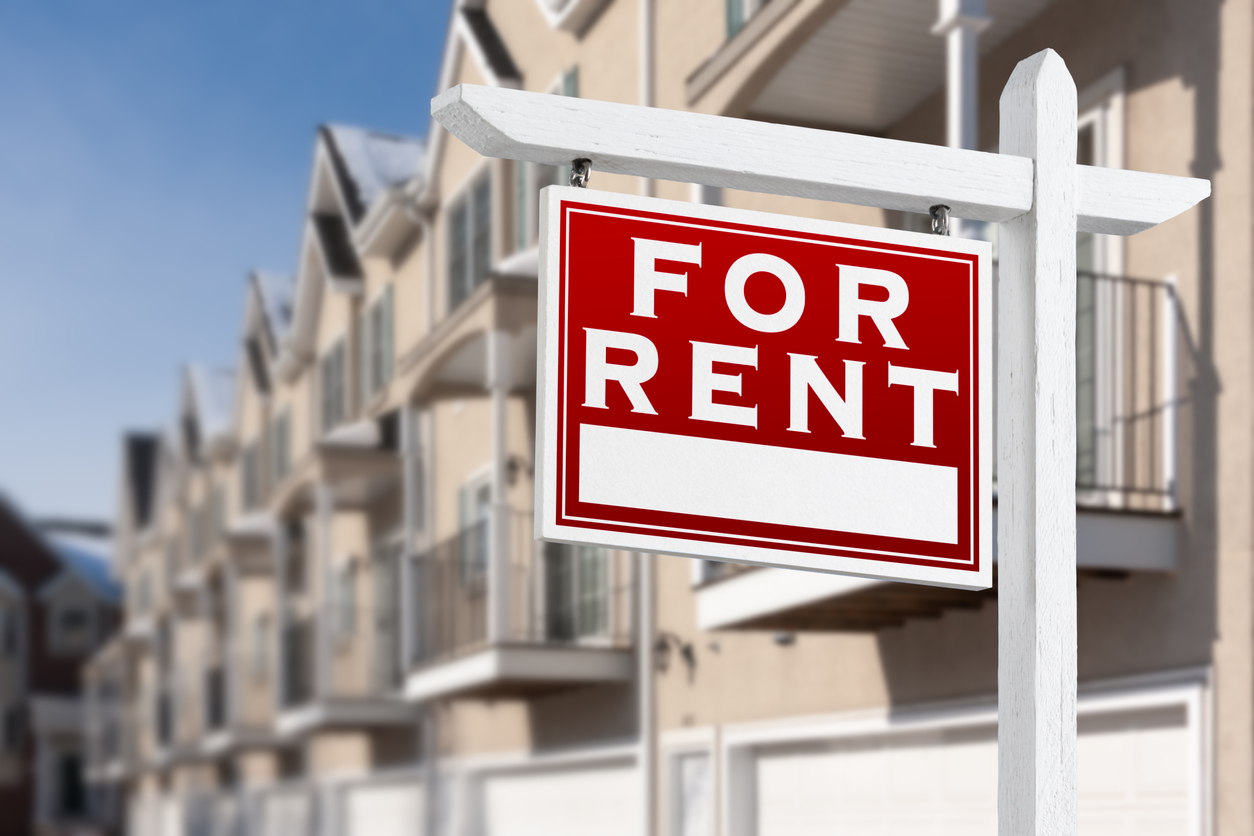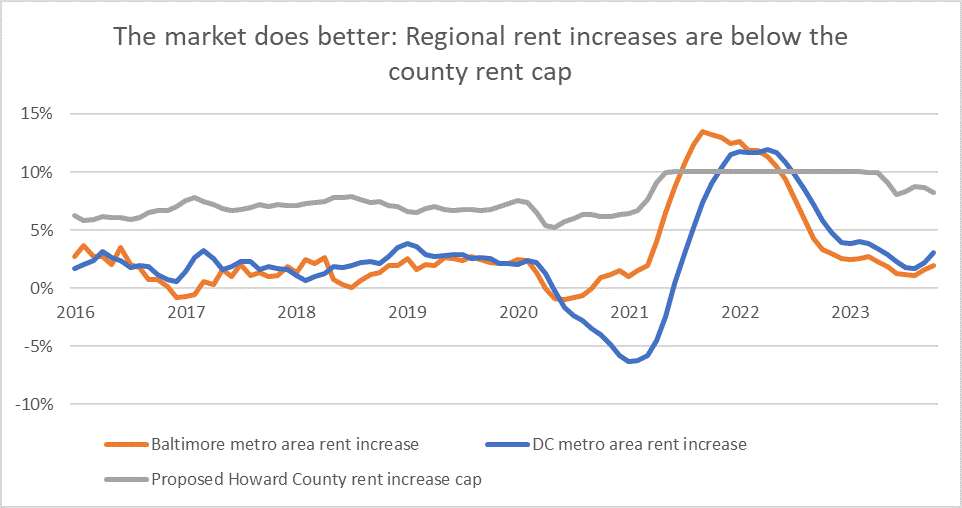
Howard County is Stepping Into a Rent Regulation Minefield
Nobody wants their own rent to go up. But rising rent is not the worst thing that can happen – and Howard County policymakers should keep the worst-case scenarios when trying to protect renters from bad outcomes. In my own Maryland town, a total of zero (0) multifamily units have been built for the forty years that strict “rent stabilization” has been in place, and the rental stock is steadily whittled away by condominium conversions.
County right to purchase is a lower-profile issue under consideration in Howard County, partly because it sounds harmless and unobjectionable. Both policies, however, can jam up rental markets to the detriment of both tenants and landlords.
Rent stabilization
Rent stabilization distorts the housing market – that’s its purpose. To be sure, the proposed rent stabilization in Howard County would allow annual rent increases of inflation plus five percent (or ten percent, whichever is lower). The market already does much better than that. As the figure shows, average multifamily rent increases throughout the region have remained far below Howard County’s proposed cap with the exception of one year in the midst of the post-COVID inflation.

Of course, averages are only part of the story. Many landlords leave rent constant for several years, often allowing it to fall below market rate while a consistent tenant is in residence. But at times of turnover, or when property costs rise suddenly, the landlord may hike rent back to market levels. If rent stabilization had been in effect during recent years, Howard County landlords would have been careful to raise rent a bit each year to ensure that they did not fall far behind the market rate.
Rent stabilization undermines the incentive for property owners to provide quality housing. When landlords face restrictions on potential returns, they are less motivated to invest in property upgrades, maintenance, and improvements. Most rent stabilization and rent control laws, including the Howard County draft, allow for landlords to apply for permission to make capital expenditures and raise rent. However, the uncertainty and nuisance of the process is a deterrent. Places with strong rent regulation are more likely to experience gradual property decay.
Another unintended consequence of rent stabilization is the potential reduction in the overall housing supply. With landlords facing limited financial incentives, there is a decreased motivation to construct new rental properties, as Takoma Park’s strict rent control regime shows. This shortage of available housing options can exacerbate the very issue that rent stabilization aims to address – a lack of attainable housing.
Proponents of the policy will surely point to its 20-year exemption for new construction and wiggle room for modest rent increases. However, long-term investments like multifamily buildings need to account for likely future policies, not just those of today. If Howard County leaders show a willingness to regulate rent at inflation plus five percent, will they vote against stricter measures in the future if (as is likely), the policy fails to make any difference in actual rents?
Right to purchase
Howard County is considering a “right to purchase” ordinance which could force rental landlords to wait for up to six months to sell a building. This limitation reduces the liquidity of a residential property investment, implying that it must either yield a higher return (via higher rents or lower maintenance) or command a lower price. Lower prices would hurt existing owners – and also the county and all its taxpayers, who would have to make up the deficit.
The policy is also unnecessary. Counties always have the right to purchase property via eminent domain.
A related policy in Washington, D.C., - tenant right to purchase, with free assignment of that right – has led to a proliferation of grifters who shake down building owners who need to sell. Two such grifters were recently sent to federal prison for illegally purchasing government information, but the core of the hustle remains legal.
Redirect the energy
Despite these misguided proposals, Howard County leaders are not wrong to identify persistently high rent (and home prices) as problems worthy of public attention. But the culprit is in the mirror: the county maintains a strict ban on apartment buildings across almost all residential land. Reviewing the zoning map, I had to zoom in to find the little pockets of land, mostly along major roads, where apartments are allowed.
Anti-apartment zoning is of a piece with rent stabilization and right to purchase. All three policies send a clear message, that rental managers are not trusted or wanted in Howard County.
Salim Furth, Ph.D., is a Senior Research Fellow and Director of the Urbanity project at the Mercatus Center at George Mason University.





